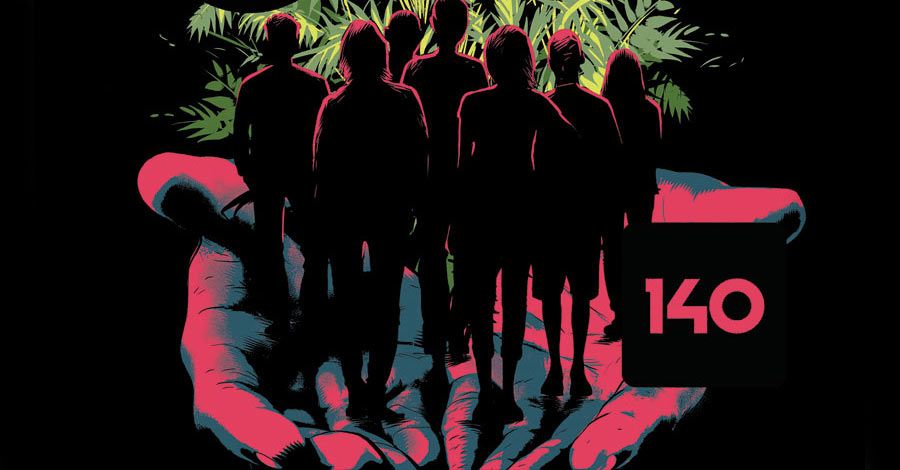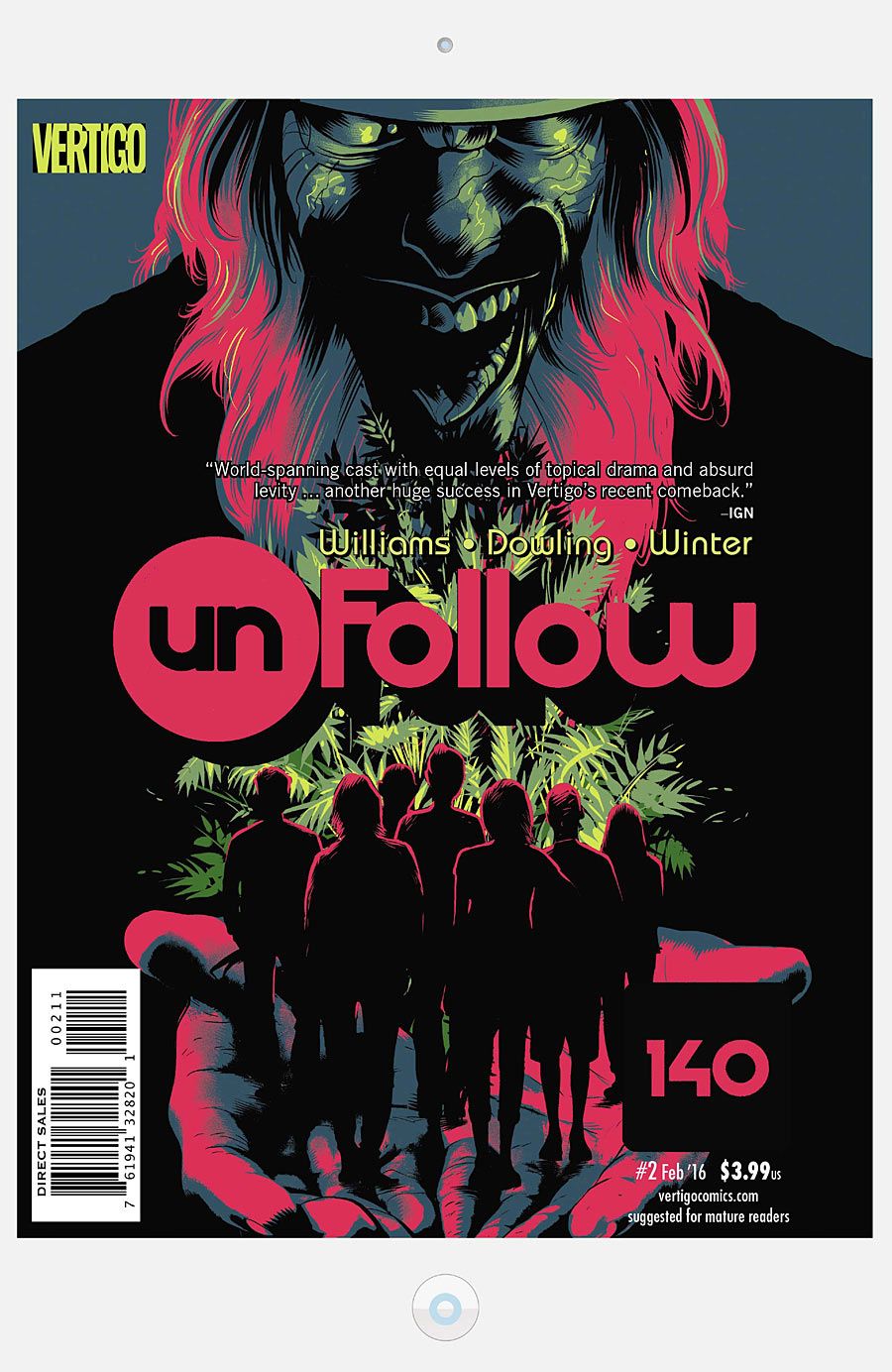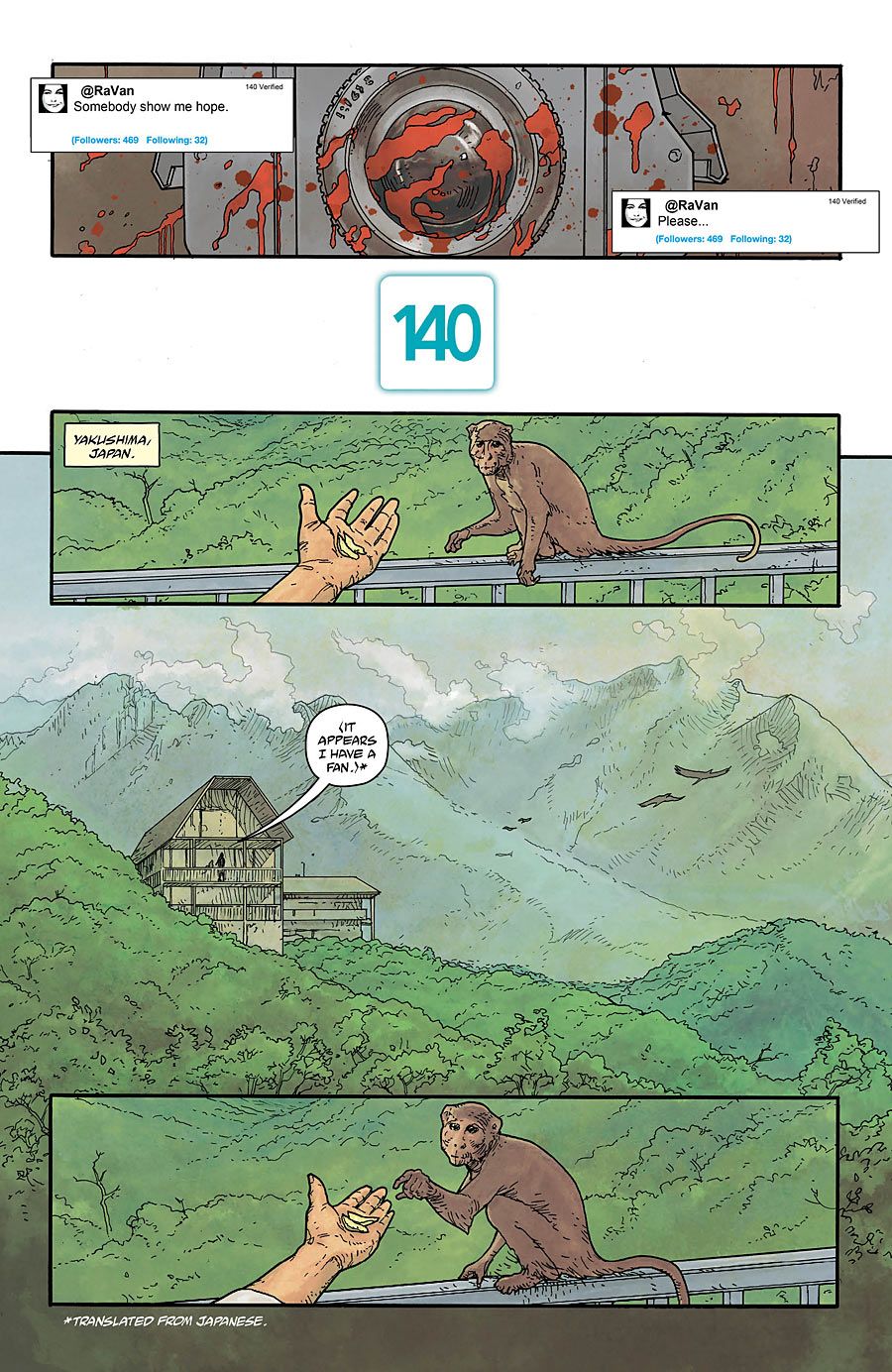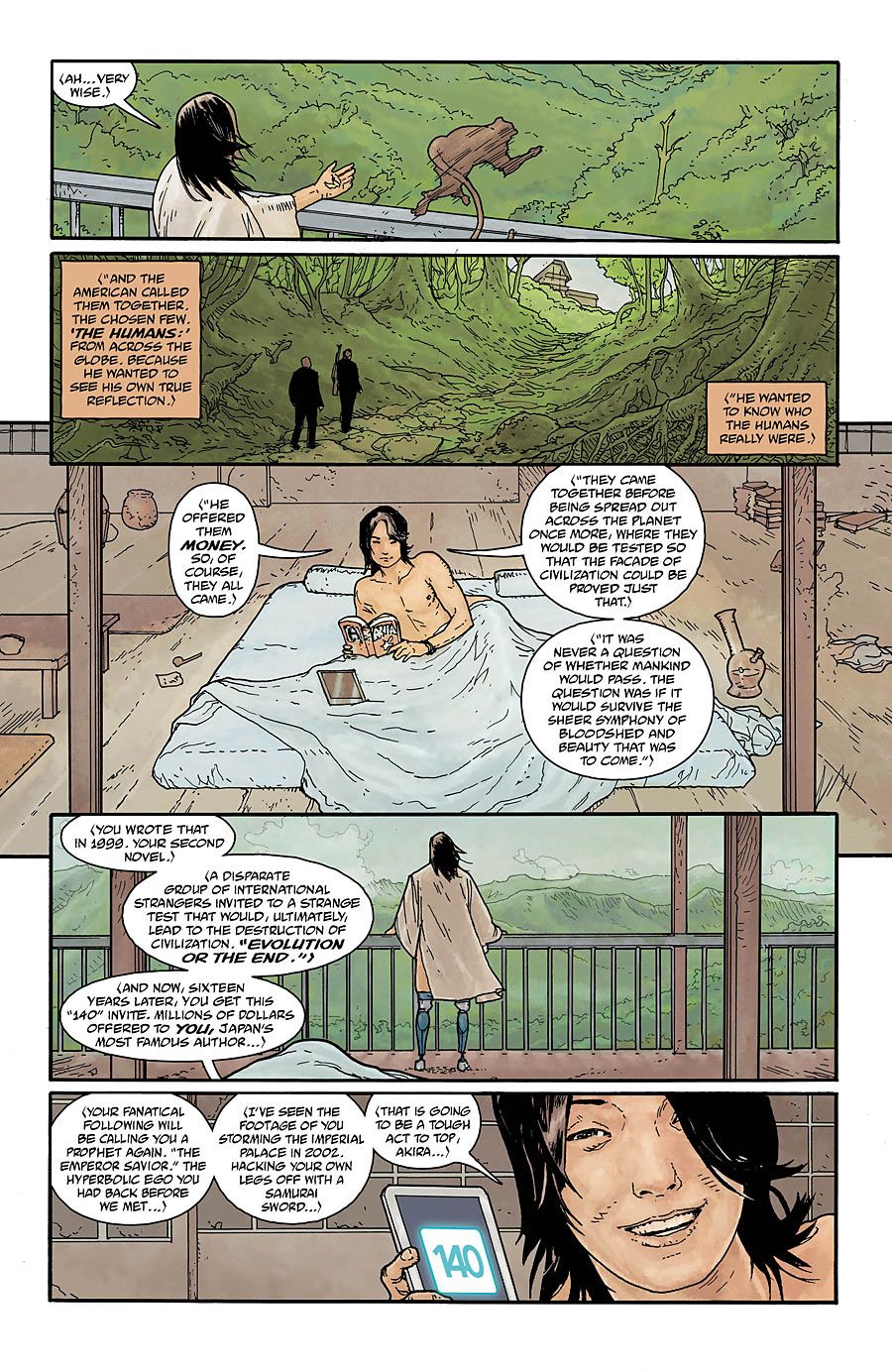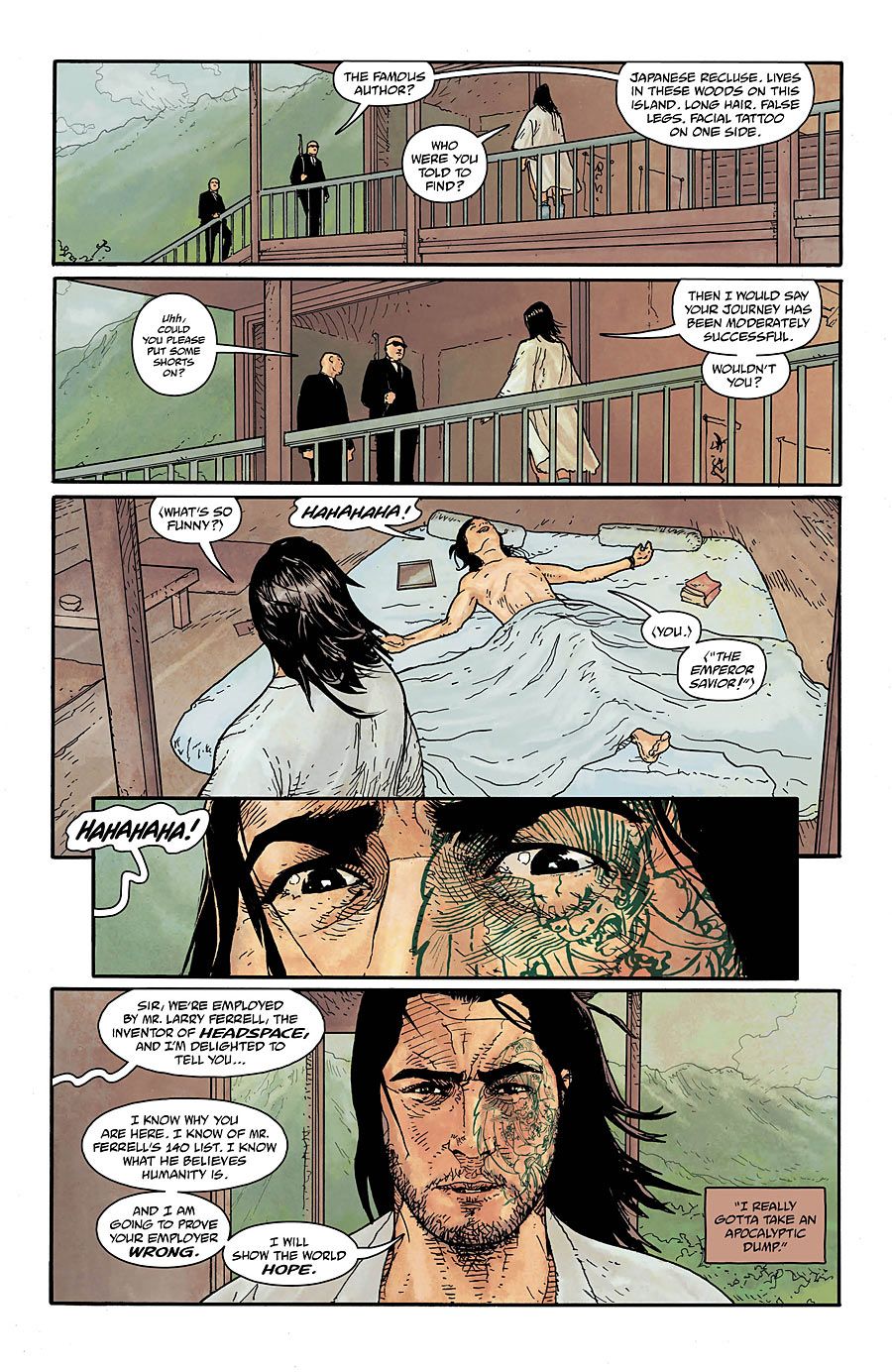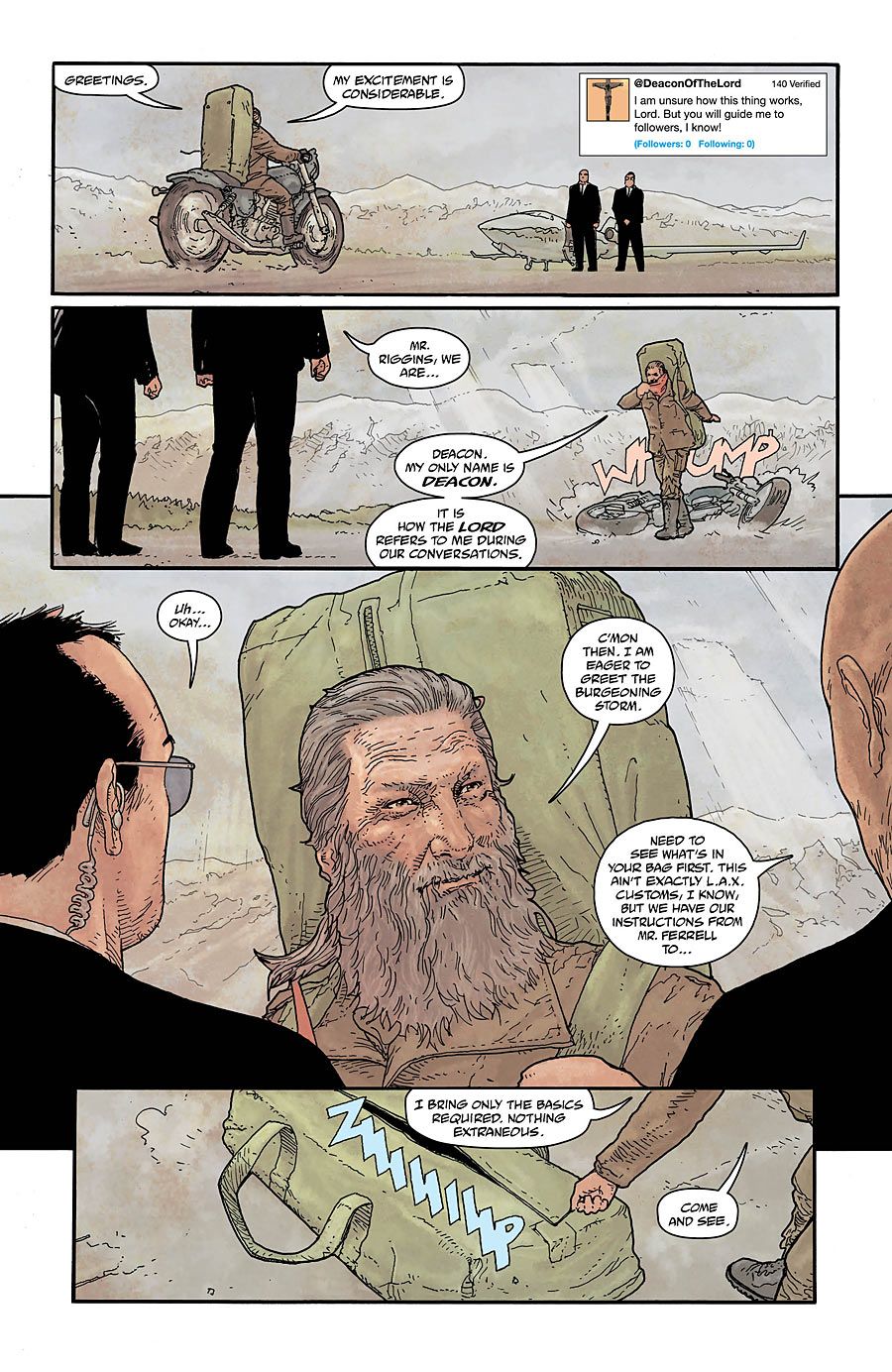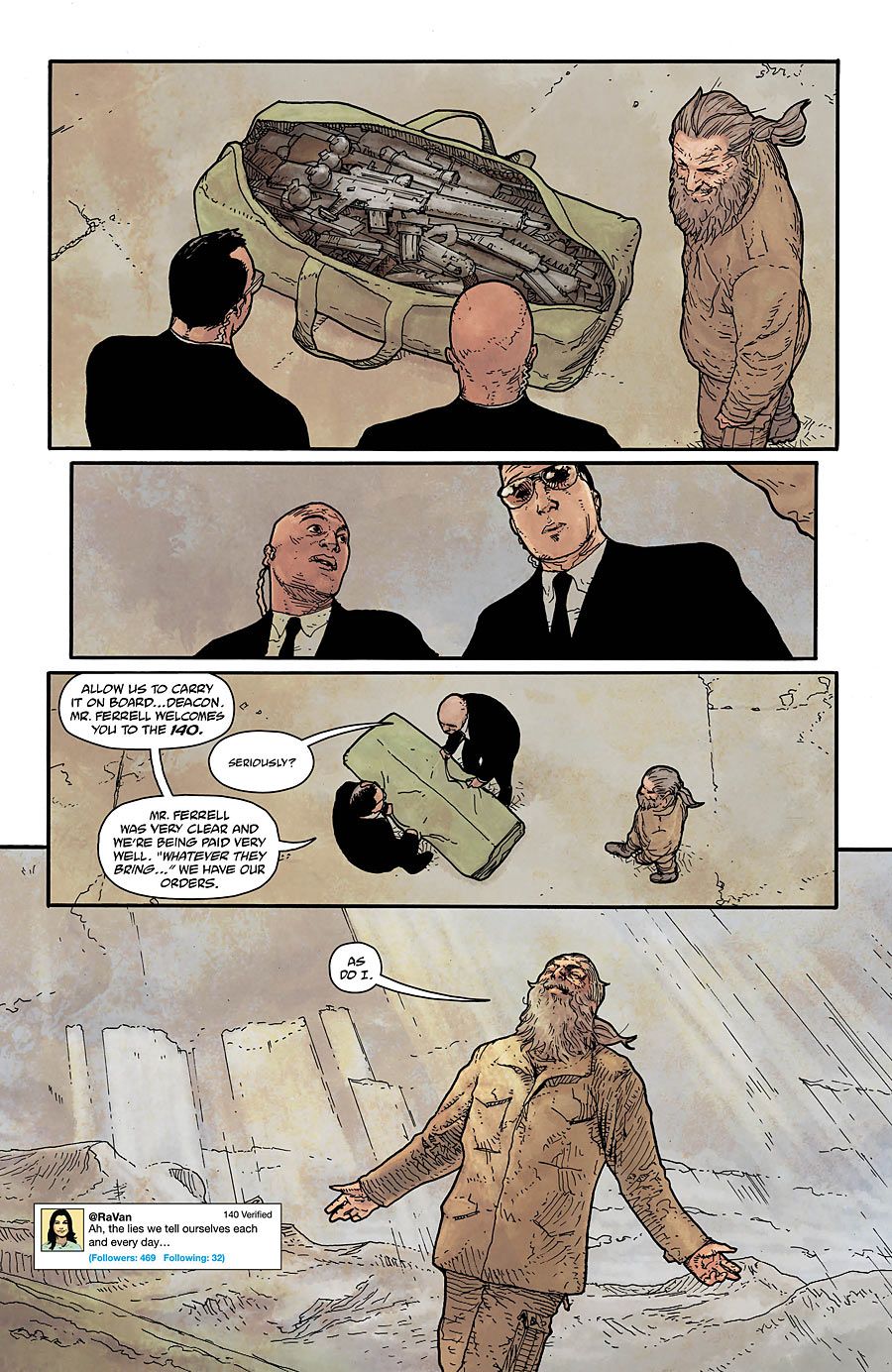With their new Vertigo series, writer Rob Williams and artist Michael Dowling put a social-media spin on a tried-and-true plot: A dying billionaire distributes his wealth to a group of people, at least some of whom will plot to kill the others in order to increase their share. What's new is the way the billionaire hands out his largesse: via social media.
The dying man in this case is the creator of a Twitter-like network called Chirper, and the 140 people who stand to share in his fortune get the news when an app is installed on their smartphones. (There's a pun buried in there, as like a Tweet, this comic has 140 characters.) With covers that look like iPads and tweets juxtaposed against the story's visuals, "Unfollow" is very much in touch with its subject matter.
RELATED: Williams & Dowling's "Unfollow" Heads to ABC as Drama Series
Just two weeks after the series debuted in November, ABC announced it was developing it for TV with "The Originals" showrunner Michael Narducci attached to adapt the story and serve as Executive Producer. With the second issue on sale now, CBR News spoke with co-creators Williams and Dowling about their series, why Vertigo is a perfect fit for the story they're telling and how the book's social media isn't just a high-concept -- it's a way to enhance their storytelling.
CBR News: This is a fairly high-concept book. Once you pitched it to Vertigo, did your editors help you refine it or has it remained largely intact since you initially conceived it?
Rob Williams: They have been very, very supportive. The end product is the same book and the same idea, but one of the core characters was a little different in terms of age and approach, and Shelly [Bond, Vertigo's Executive Editor] felt the book would have gone in a different direction. Good editors don't mess with the theme. When you start messing with that, everything's lost. It's more seeing what your vision is and saying, "Maybe it would be better served by taking this slightly different approach." But it's still your vision. That's how you know you are working with good editors. From that point of view, Vertigo has been great and really helped the end product, and that's what you want from an editor.
Despite the change to that core character, did you come in with a fairly concrete idea of where this story wraps up? Will there be a final issue where we learn who the winners and losers are? And does having a finite ending for a story limit you as a storyteller?
Williams: It's a bit of both. I've got certain things which I know are going to happen in the future and others will, I'm sure, suggest themselves along the way, as long as people like the book. I think that's usually the way with writing: You have to have an end in mind, you have to serve the premise and the theme, but you have to change things along the way. It annoys me when people say "They were making it up along the way" with TV shows. That's how writing is. Nobody says "I have every aspect of this worked out," and that's part of the joy of it.
Vertigo Adds 12 New Titles to Its Fall Lineup
In issue #1, Rubenstein is one of the strongest characters -- he's wearing a witch doctor death mask -- but he was one of the last to appear. He wasn't in the initial pitch, and he's one of the strongest aspects of the story, and that's the magical side of writing -- when things like this work. We have certain structural things down, we know where we are going with the major beats, and there is the ability to tell a bunch of different stories. The working title of the book was "140 Characters," and we can tell stories with 140 different characters, all around the world. Creatively it's a very rich world that we are going into.
Michael, what does it mean for you as an artist to be working on a Vertigo title?
Michael Dowling: I remember reading "Hellblazer," seeing Glenn Fabry's painted covers [and thinking] "What's that? I think that guy's smoking and drinking," and then reading Garth Ennis' run and picking up things like "Sandman," books across the Vertigo line. It really opened up my eyes to what else comics could be beyond super heroes, and then expanded out into independent books. So it's kind of an ambition fulfilled to have a book at Vertigo.
Has your perception of Vertigo changed since you started working with them?
Williams: I think -- and I think this is what I felt about Vertigo beforehand and what I feel having worked for them now -- the really nice thing from a creative point of view is you feel emboldened to push boundaries. You don't feel you have to take your foot off the pedal.
Dowling: I'd say the same. My perception of Vertigo is that it was a place where interesting genre or even non-genre books could happen, and that hasn't changed at all. It still feels like we can do anything, really, which is a great feeling as a creator. It's a bit worrying. You need some limitations, but these are the right kind of freedoms -- that we can bring as much intensity to it as we need, without being held back.
Williams: It feels like Vertigo is the HBO of comics, dealing with sophisticated, groundbreaking material. That's kind of how I think of "Unfollow" going in. It feels like it fits.
The use of Tweets gives you a new way of providing story information. How did you incorporate it into your storytelling? And Mike, how did it affect the art?
Dowling: There's an interesting scene in issue #2 where Dave, who is kind of the protagonist, is having a difficult conversation with his sister, and in the same panel we can see there's a Tweet he just put out which is about him coming into all this money so it's like "Woo, got this one!" and then he has this difficult conversation, so it gives you another look into what's going on with the characters, another sense of what they are up to, and also how differently people present themselves on social media, how they choose to present themselves as opposed to real life.
How did you give those Tweets a distinctive look to separate them visually from other types of text?
Dowling: We did that partly with Clem Robins, the letterer. Between me and Clem, we threw in a lot of possibilities for Tweet boxes, but he devised a distinct lettering style based on what's appropriate for the character. So that's on Clem, really.
Williams: We were very aware that we wanted to incorporate things like that into the page furniture. The Willie Wonka golden ticket is that the 140 chosen ones app appeared on phones just like the U2 album appeared on iPhones. There's a reason why the covers are all made to look like they are iPad screens. This is a story about the social media world, and we wanted to use that in the visual language of the book as well. From a writing point of view, I love unreliable narrators, and comics are brilliant about that. The words can say one thing, the pictures say something completely different. That's a great weapon we have in comics that film and prose don't have.
"Unfollow" #2 is on sale now from Vertigo/DC Comics.

